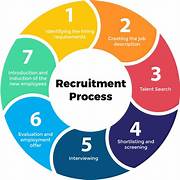How the Local Government Hiring Process Works: A Step-by-Step Guide
Getting a job with the local government is an excellent way to serve your community while enjoying benefits like job stability, solid pay, and career growth. Whether you’re applying for a role as a city planner, administrative assistant, sanitation worker, police officer, or anything in between, the hiring process can seem overwhelming if you’ve never navigated it before.
Unlike private companies, local government jobs follow a more formal and structured hiring process. Each step is designed to ensure fairness, transparency, and equal opportunity. So if you’re interested in public service and wondering how to land a local government job, this guide is for you.
Let’s break down the local government hiring process—from understanding job postings to accepting the final offer.
Step 1: Understanding Local Government Jobs
Before diving into applications, it’s important to understand what “local government” means. Local governments include:
- Cities
- Towns
- Counties
- Municipalities
- School districts
Each has its own departments and agencies, such as:
- Public Works
- Parks and Recreation
- Housing and Urban Development
- Finance and Budget
- Health and Human Services
- Law Enforcement
- Libraries
Each agency hires employees based on community needs and public funding. Roles range from entry-level positions to high-level administrators. Most jobs are unionized, categorized, and tied to pay grades or salary bands.
Step 2: Searching for Job Openings
You can usually find local government job listings on:
- Official city or county websites
- State job portals
- Job boards like GovernmentJobs.com, USAJobs.gov (for federal roles), and Indeed
- Local newspapers or community bulletin boards
Pro Tip: Set up email alerts or RSS feeds to get notified when jobs matching your skills become available.
Step 3: Reading the Job Description Carefully
Local government job descriptions are often very detailed. Here’s what you should pay attention to:
1. Job Title and Classification
- Indicates the level (e.g., entry-level, supervisory).
- Shows whether it’s part-time, full-time, temporary, or permanent.
2. Minimum Qualifications
- Education, experience, certifications, and sometimes licenses.
- For example, a clerk may require a high school diploma, while a housing inspector may need specific licenses.
3. Duties and Responsibilities
- A list of typical tasks.
- This helps you tailor your resume and cover letter.
4. Pay Range
- Often listed with the hourly wage or salary band.
- Includes steps (e.g., Step 1 to Step 5), which reflect years of service.
5. Application Deadline
- Many local government positions close on a specific date, so mark your calendar!
Step 4: Submitting the Application
Most local governments require applications to be submitted online. Here’s what you’ll usually need:
✅ Government Application Form
- A structured form with fields for job history, skills, and references.
- Often replaces the need for a resume (though attaching one is usually optional or encouraged).
✅ Resume
- Customize your resume for each role.
- Use keywords from the job posting.
✅ Cover Letter
- While not always required, it’s highly recommended.
- Keep it concise—explain why you’re a great fit and what you can bring to the role.
✅ Additional Documents
- Certifications, diplomas, writing samples, or licenses may be required.
- Always read the fine print in the job posting.
Tip: Submit early. Don’t wait until the last minute, especially if the system gets overloaded near deadlines.
Step 5: Initial Screening
After applications close, the HR department or personnel team screens applicants for minimum qualifications.
There are typically two kinds of requirements:
1. Minimum Qualifications
- Do you meet the basic education, certification, or experience levels?
2. Desirable Qualifications
- Do you have additional experience or skills that set you apart?
Those who meet the minimum qualifications may be moved to the next round. Others are notified they didn’t qualify.
Step 6: Written Exam or Skills Test (If Applicable)
Many local government jobs require a civil service exam or skills test.
These exams might assess:
- Grammar, math, or reading comprehension
- Problem-solving skills
- Software skills (like Excel or database systems)
- Job-specific scenarios
For example:
- A clerk typist role may require a typing speed test.
- A fire department position might include physical agility and written aptitude tests.
- An accounting role may require a math or logic test.
Tip: You’ll usually be given a study guide or practice questions in advance.
Step 7: Interview Process
If you pass the written exam or initial screening, you’ll likely be invited to an interview. Local government interviews tend to be:
➤ Structured and Panel-Based
- Often involve a panel of 2–5 people, such as supervisors, HR reps, or department heads.
➤ Behavior-Based
- You’ll be asked scenario or STAR (Situation, Task, Action, Result) questions.
- Example: “Describe a time when you had to manage a difficult customer or resident.”
➤ Scored or Ranked
- Panelists often score your answers based on predefined criteria.
➤ May Include Multiple Rounds
- Especially for competitive or higher-level roles.
Tip: Research the department and local government’s mission beforehand. Demonstrate your alignment with public service values.
Step 8: Eligibility List or Ranking
After the interview, your score from the tests and interview may place you on an eligible list (also called a “cert list” or “ranked list”).
- This list is used by the hiring manager when choosing candidates to hire.
- In some cities, the top 3–5 candidates may be eligible for final interviews or offers.
Step 9: Background Check and References
Once you’re selected for the role, you’ll undergo a background check. This could include:
- Employment history verification
- Education verification
- Criminal background check
- Drug screening (for certain positions)
- Driving record (especially for field jobs)
Some roles (like police, fire, or finance) may also require psychological evaluations or credit checks.
Step 10: Job Offer and Onboarding
If all goes well, you’ll receive a conditional or formal offer of employment. This may be:
- Contingent on final checks or approvals by a city council, board, or commission.
- Non-negotiable in terms of salary—though you may be able to negotiate starting steps within a pay grade.
Once hired, you’ll go through orientation and training, including:
- Policy reviews
- Union membership info (if applicable)
- Health insurance and benefits enrollment
- Workplace safety and ethics training
Benefits of Local Government Jobs
Aside from community impact, local government jobs offer:
✅ Stable employment
✅ Pension plans or retirement contributions
✅ Generous paid leave (sick, vacation, and holidays)
✅ Health, dental, and vision insurance
✅ Work-life balance (most follow a 40-hour work week)
✅ Opportunities to grow (promotions often happen from within)
Common Challenges to Be Aware Of
While rewarding, the process can be:
- Slow: It might take 4–8 weeks or longer from application to offer.
- Highly regulated: Everything is documented and must be compliant.
- Rigid: There’s less room for negotiation compared to the private sector.
- Competitive: Jobs with great benefits attract a large pool of applicants.
Patience and persistence are key!
Final Thoughts
Landing a local government job can be one of the most impactful and rewarding moves in your career. Whether you’re passionate about education, public safety, urban development, or health services, there’s a role for nearly every background and personality type.
By understanding the hiring process—from application to final offer—you’ll be better prepared to navigate it confidently and professionally.
Ready to get started? Take the first step by exploring your city or county’s job portal today. And remember: in government hiring, being prepared, patient, and persistent can make all the difference.


